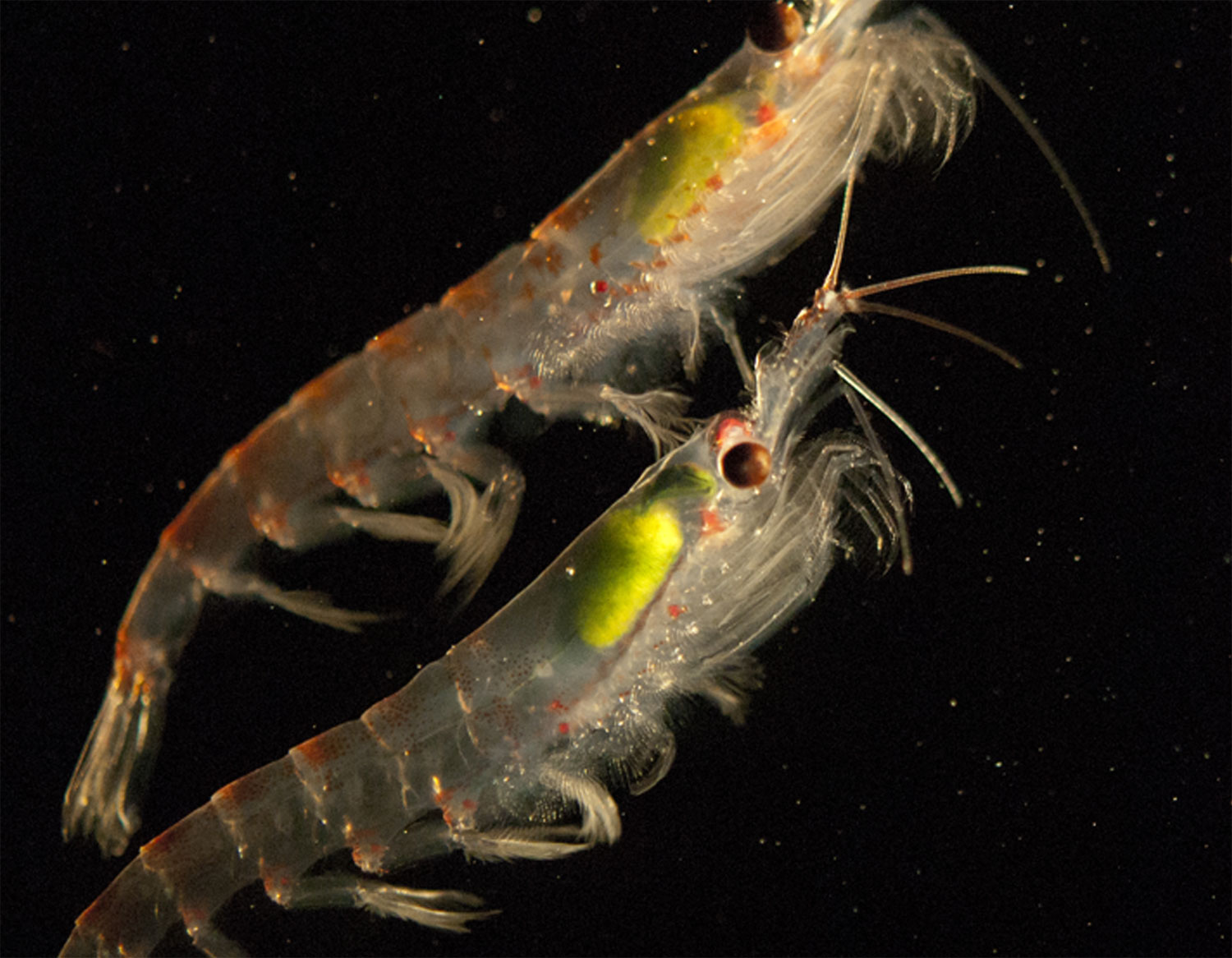The Antarctic Krill
Antarctic krill (Euphausia superba). Photo: Australian Antarctic Division
With a maximum length of 60 mm and a weight of 2 grams, the Antarctic krill (Euphausia superba) might seem small and unimportant. But did you know that they are estimated to have the largest population of any species on Earth? The krill plays a key role in the Antarctic ecosystem, and is an important food source for Southern Ocean species.
Antarctic krill is a swimming, shrimp-like crustacean living exclusively in the Southern Ocean. They are a swarming (or schooling) species and much of the krill biomass is found in large, dense aggregations that can extend for tens of kilometres. It is still unknown if there is one or several distinct populations of krill around the Southern Ocean.
Krill have a complicated life history, changing size, shape and habitat as they grow. They mature at two years old and can live for up to eleven years. Adult krill are capable of living anywhere in the Southern Ocean – from the very surface layer to the seafloor, and from inshore areas to the deep open ocean. Larval and juvenile krill stay close to sea ice and feed on algae that grow on the underside.
The krill population is large and they reproduce at high rates. Consequently they are preyed upon by a range of animals including seals, penguins, whales, fish and squid. It is also subject to a commercial fishery, internationally regulated by CCAMLR.

